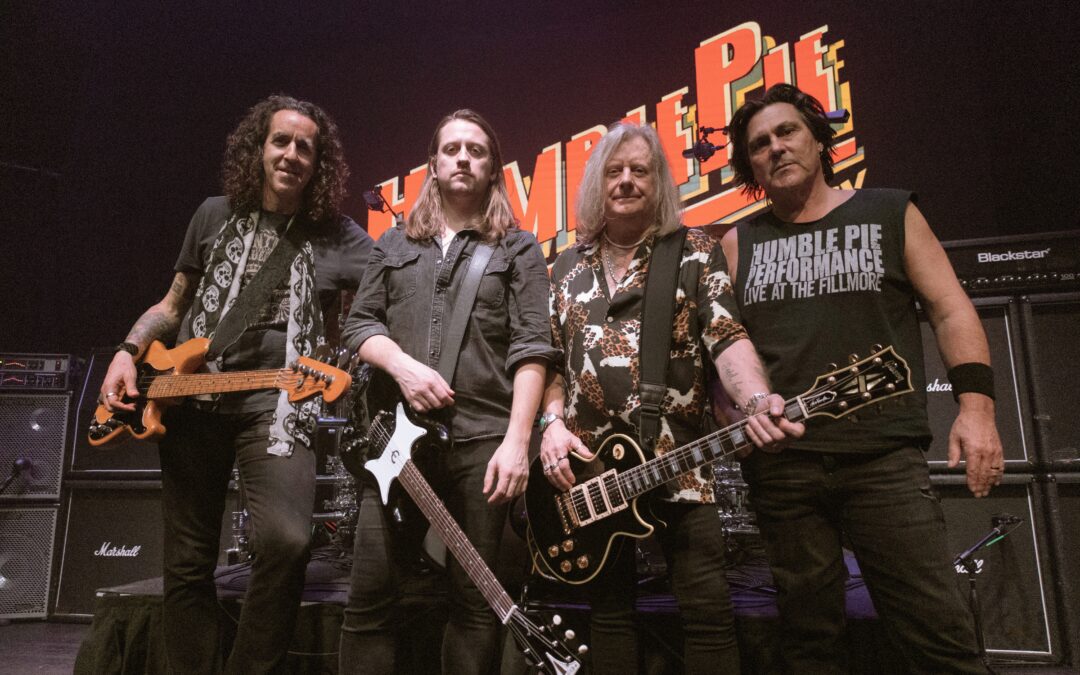By Jeff Maisey
Back in the early 1970s, Humble Pie was considered one of the best live rock n roll bands to experience as is evident on their “Rockin’ the Fillmore” double-album released in 1971.
The English group was formed by Steve Marriott (vocals, Small Faces) and Peter Frampton (vocals, guitar), along with Greg Ridley (bass) and Jerry Shirley (drums).
Humble Pie gained popularity in America with its fifth studio album, “Smokin’,” in 1973, thanks to the strength of its single “30 Days in the Hole.”
Over time, Humble Pie would loose and gain members; take a break and later reform/reunite.
On September 13, the band will kickoff a new tour of America at Elevation 27 with hometown boys Anthony Rosano & The Conqueroos opening the show and then joining the legends on the road.
Humble Pie founding drummer and songwriter Jerry Shirley has had a number of health challenges and thus handpicked a strong group of musicians to carry Humble Pie’s musical legacy forward for this tour. The member include Dave Calwell (guitar), who frequently plays in Bad Company on the road, Jim Stapley (vocals), James Rotondi (guitar), Ivan Bodley (bass), and Bobby Marks (drums).
Following is just an excerpt of my interview with Jerry Shirley. You can read the LP version on our website.
VEER: What would you say is Humble Pie’s legacy?
Jerry Shirley: Simply put I would say that Humble Pie’s legacy is that it was and always has been one of the best live bands ever to come out of the early 1970s; a band who also made some fine studio albums. We intend to keep going with the new line up.
VEER: Take us back to 1968 England. Led Zeppelin, Jethro Tull, and so many others — including Humble Pie — were just starting out. What was the blues/rock scene like in big cities such as Birmingham, Leeds, and London?
Jerry Shirley: It was electric. The audiences had started to get much more into the music and make themselves heard more. Like the American audiences, they wanted to participate in what we were doing instead of just sitting there and politely clapping at the end of each number. It was a wonderful time with so many great bands and so much diversity. That generation was a lucky bunch; they didn’t have or need all the smoke and mirrors that are used today to enjoy a show. Some bands had started to develop their production effects like Pink Floyd and Genesis, but bands didn’t rely on that stuff back then the way they do today.
VEER: Regarding the album “Smokin’”: This was the band’s major breakthrough in America. What was the environment within the band like when you entered the studio to record it?
Jerry Shirley: It was amazing. We had just come off our first headline tour of the USA and several dates in Europe and the UK. We had bonded really well with Clem; his vision of what kind of band he wanted to be in was exactly the same as the vision we had for the band after Peter (Frampton) left. He was known for his blues playing and we were heading in that direction so not only were we a well oiled machine due to being on the road so much so soon after he joined, that recording was just like doing another gig. In fact we set up in the studio just like we did on stage…a lot of first takes which are always the best.
VEER: What makes “30 Days in the Hole” such a great, straight-forward rock song?
Jerry Shirley: The groove first of all and then the lyric but mostly even though it was a song that was already written we performed it as if it was played on stage and again got it within the first take or two so it has a lovely spontaneity to it.




